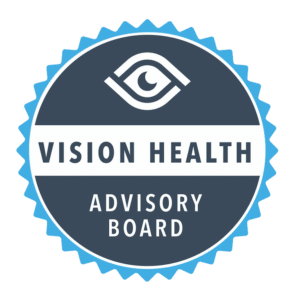For Immediate Release: Statement from the Vision Health Advisory Board
The use of consumer electronics with digital displays has greatly evolved over the last decade. With this evolution, our position is that health and safety standards also need to evolve.
Our increasing and cumulative use of display products is producing a growing array of impacts on human health. This fact requires consideration of leading health and safety standards for all device users including children, adults, the aging population, and those with a variety of health conditions creating potential increased risk from extended exposure to display technology.
One primary issue is that because of the dramatic change in our use of display technology, there exists a lack of fundamental peer-reviewed research. However, there does exist a large and growing body of guiding health research on the known and potential impacts of device use on health.
This research cannot be ignored. Doing so comes at the risk of generations of electronics users.
The current display industry standards and requirements for reduced blue light lacks guiding principles from this health research, and requires significant update. Further, historical solutions to blue light have caused color degradation, which has led to limited consumer adoption.
This guiding research includes more than 250 articles we have reviewed, organized and made available with the Eyesafe team. We believe that this guiding research provides a trajectory for both current and future consumer electronics display health and safety standards.
The future of health and safety for consumer electronics displays can be considered within these key elements:
1. Limit Emissions of High-Energy Visible (HEV) Blue Light: The research points to a specific band of high-energy visible (HEV) blue light that is more toxic. This band of light has been weighted across the blue light spectrum of 380-500nm with primary peaks of toxic light in the 415-455nm range. Resulting requirements should guide displays to emit less within the most toxic regions. Further, it’s recognized that blue light in doses is required for human health and certain bands of the blue light spectrum should be allowed from the display.
2. Recommendations for Maximum Energy Exposure Levels: The research has connected cumulative exposure to health issues and concerns and future display requirements will take this into consideration. There should exist both a maximum or ceiling requirement that may differ dependent on the user. For example, a young child with a still developing crystalline lens may require a lower maximum energy. Additionally future requirements will consider the time component of energy consumption and total energy intake from devices.
3. Optimal Color Performance: In order for mass appeal and adoption across the consumer electronics industry, uncompromised color performance is critical. The future requirements for front of screen color will be in line with the industry leading key performance indicators.
Each of these components could be adapted to the needs of the user, allowing devices to intelligently and uniquely manage device light emissions.
Our mission is to provide the industry with guiding research and synthesized information in the development of the world’s healthiest digital display products. In combination with Eyesafe and the largest display manufacturers, we believe the future of consumer electronics display development puts human health and safety at the forefront.
We applaud the international growing body of research, including the newly announced research program by Salus University. This type of new research, in combination with the existing body of research, will guide the direction of the display industry for human health and safety.

